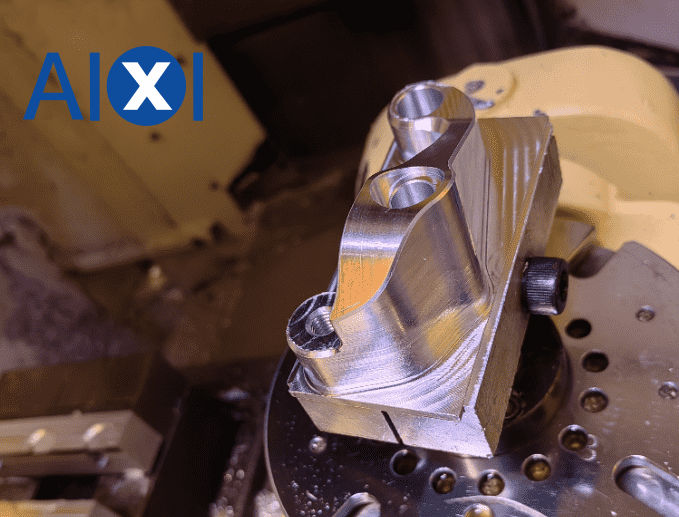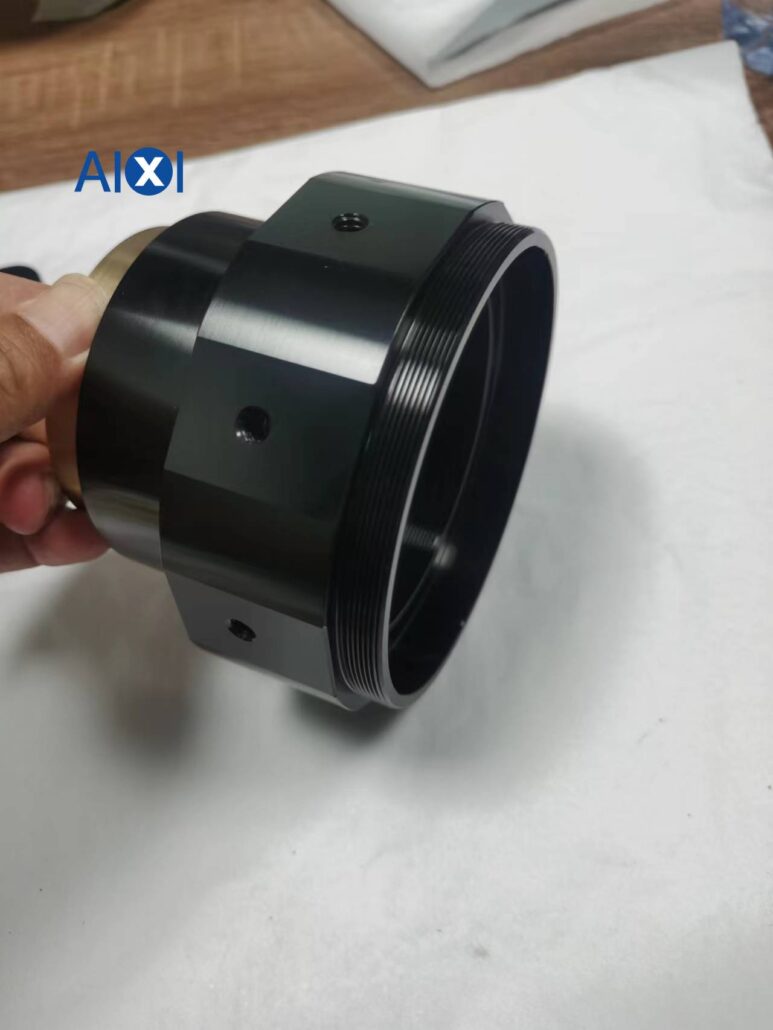- Properties and characteristics of aluminum
Aluminum is a light, malleable silvery white metal with good electrical and thermal conductivity. In the field of machining, aluminum is widely used because of its low density, high plasticity and good machinability. However, aluminum also has some unique processing challenges, such as its high thermal conductivity may lead to increased tool wear during cutting, and the soft characteristics of aluminum make it easy to produce burrs and deformation during processing.
- An overview of CNC machining
CNC machining is a method of machining parts by computer-controlled machine tools. Numerical control machining has the characteristics of high precision, high efficiency and high degree of automation, and is suitable for machining all kinds of complex parts. In the numerical control machining of aluminum, it is very important to choose appropriate cutting parameters, cutting tools and machining strategies.
3.The numerical control processing strategy of aluminum
- Selection of cutting parameters: Cutting speed, feed rate and cutting depth are the key factors affecting the processing quality of aluminum. Too high cutting speed may lead to increased tool wear, while too low cutting speed may affect machining efficiency. The selection of feed rate should ensure the stability of cutting process and avoid vibration or burr. The cutting depth should be reasonably adjusted according to the thickness and hardness of aluminum to ensure the machining accuracy and surface quality.
- Tool selection: According to the processing characteristics of aluminum, tools with high wear resistance and cutting performance should be selected. Commonly used tool materials include high speed steel, cemented carbide and ceramics. In addition, the tool geometry and coating also have an important impact on the machining effect.
- Optimization of processing strategy: In order to improve the processing quality and efficiency of aluminum, some optimization strategies can be adopted, such as layered milling, combination of forward milling and reverse milling. Layered milling can reduce cutting force and tool wear; The combination of forward milling and reverse milling can reduce the vibration and burr in the cutting process.
Four, common problems and solutions in aluminum numerical control machining
- Tool wear: Due to the high thermal conductivity of aluminum, the heat generated in the cutting process is easy to wear the tool. In order to solve this problem, tool materials with high wear resistance, such as ceramic tools, can be used, and cutting parameters can be optimized to reduce cutting temperature and cutting force.
- Burr and deformation: The soft nature of aluminum makes it easy to produce burr and deformation during processing. In order to reduce burrs, sharp tools and appropriate cutting parameters can be used; In order to reduce deformation, clamps and supporting structures can be used to fix aluminum materials to reduce vibration and stress during processing.
- Poor surface quality: there may be problems such as rough surface and scratches during aluminum processing. In order to improve the surface quality, cutting fluid with good lubrication performance can be selected to reduce friction and heat during cutting; At the same time, regularly check the sharpness and wear of the tool to ensure the stability of the cutting process.
4 The main aluminum brand
1000 series
Aluminum 1xxx alloy contains the purest aluminum and at least 99% aluminum by weight. Without specific alloying elements, these are almost all pure aluminum. For example, aluminum 1199 contains 99.99% aluminum by weight and is used to make aluminum foil. These are the softest grades, but they can be work hardened, which means that they become stronger after repeated deformation.
2000 series
Copper is the main alloying element in 2000 series aluminum. These grades of aluminum can be precipitation hardened, which makes them almost as strong as steel. Precipitation hardening includes heating the metal to a certain temperature, so that the precipitation of other metals appears from the metal solution (while the metal is still solid), and it is helpful to improve the yield strength. However, due to the addition of copper, 2xxx aluminum grade has low corrosion resistance. Aluminum 2024 also contains manganese and magnesium, which is used in aerospace components.
3000 series
Grade 3xxx aluminum contains manganese as its most important addition element. These aluminum alloys can also be work hardened (this is necessary to achieve a sufficient hardness level because these grades of aluminum cannot be heat treated). Aluminum 3004 also contains magnesium, which is an alloy used for aluminum beverage cans and its hardened variants.
4000 series
Silicon is the main alloying element in 4000 series aluminum. Silicon lowers the melting point of aluminum 4xxx grade. Aluminum 4043 is used as covered electrode material for welding 6000 series aluminum alloys, and aluminum 4047 is used as plate and cladding in buildings.
5000 series
Magnesium is the main alloying element in 5000 series. These grades have the best corrosion resistance, so they are usually used in marine applications or other situations where extreme elements are faced. Aluminum 5083 is an alloy often used in ship parts.
6000 series
Both magnesium and silicon are used to make some of the most common aluminum alloys. The combination of these elements is used to create 6000 series, which is usually easy to process and can be precipitation hardened. In particular, 6061 is one of the most common aluminum alloys and has high corrosion resistance. It is usually used in structural and aerospace applications.
7000 series
These aluminum alloys are made of zinc, sometimes copper, chromium and magnesium, and can become the strongest of all aluminum alloys through precipitation hardening. Class 7000 is usually used in aerospace applications because of their high strength. 7075 is a common brand, its corrosion resistance is lower than other alloys, although its corrosion resistance is higher than that of 2000 series materials. This alloy is widely used, but it is especially favored for aerospace applications.
8000 series
8000 series is the general name of aluminum alloy, which is not suitable for any other category. These alloys can include many other elements including iron and lithium. For example, 8176 aluminum contains 0.6% iron and 0.1% silicon (by weight), which is used to make wires.
- Development trend and future prospect of aluminum CNC machining
With the continuous progress of science and technology, the numerical control processing technology of aluminum is also developing. In the future, aluminum CNC machining will develop towards higher precision, higher efficiency and lower energy consumption. At the same time, with the popularization of intelligent manufacturing and industrial internet technology, aluminum numerical control processing will be more intelligent and automated, and more efficient production and management will be realized.
- Conclusion
In a word, the CNC machining of aluminum needs to comprehensively consider the properties of aluminum, cutting parameters, tool selection and machining strategy. By continuously optimizing the machining process, solving common problems and improving the machining quality and efficiency, the numerical control machining of aluminum will play a greater role in the manufacturing industry. At the same time, with the continuous progress and innovation of technology, the future of aluminum CNC machining will be broader and better.

 Deutsch
Deutsch Français
Français 日本語
日本語 Español
Español

